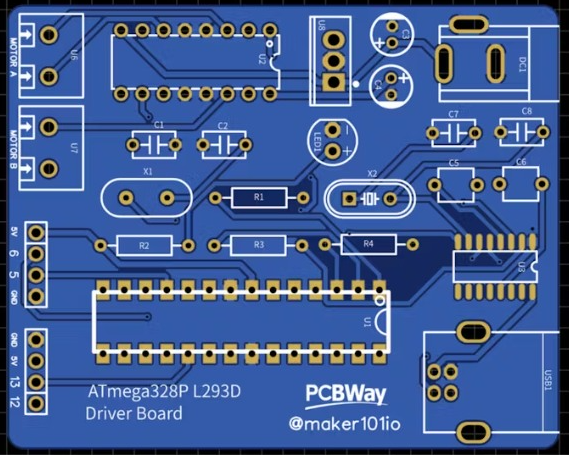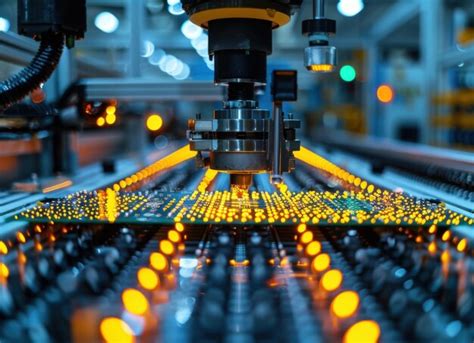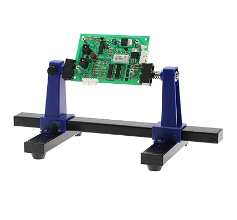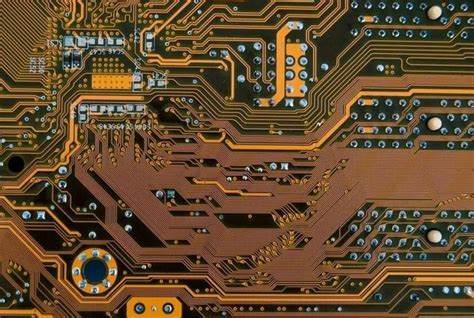Thermal Clad PCBs: Revolutionizing Heat Management in Electronics
Introduction
In the ever-evolving world of electronics, managing heat dissipation is a critical challenge. As devices become more compact and powerful, the need for efficient thermal management solutions has never been greater. Thermal Clad Printed Circuit Boards (PCBs) have emerged as a revolutionary technology that addresses this challenge head-on. These specialized PCBs are designed to enhance heat dissipation, improve reliability, and extend the lifespan of electronic components. This article delves into the intricacies of Thermal Clad PCBs, exploring their construction, benefits, applications, and future prospects.
Understanding Thermal Clad PCBs
What are Thermal Clad PCBs?
Thermal Clad PCBs, also known as metal-clad PCBs or insulated metal substrates (IMS), are a type of PCB that incorporates a metal base layer to improve thermal conductivity. Unlike traditional PCBs, which use non-conductive materials like FR4, Thermal Clad PCBs feature a metal core, typically made of aluminum or copper, that serves as a heat sink. This metal core is bonded to a thin layer of dielectric material, which provides electrical insulation while allowing efficient heat transfer from the components to the metal base.
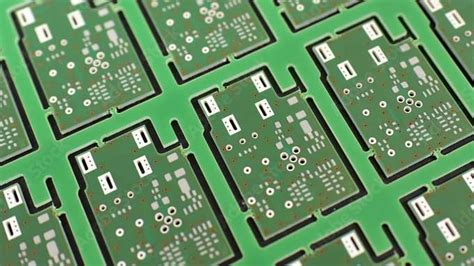
Construction of Thermal Clad PCBs
The construction of Thermal Clad PCBs involves several layers, each serving a specific purpose:
- Metal Base Layer: The core of the PCB, usually made of aluminum or copper, provides excellent thermal conductivity. Aluminum is more commonly used due to its lower cost and lighter weight, while copper offers superior thermal performance.
- Dielectric Layer: A thin layer of thermally conductive but electrically insulating material is applied on top of the metal base. This layer ensures electrical isolation between the metal core and the circuit traces while facilitating heat transfer.
- Circuit Layer: The top layer consists of copper traces that form the electrical connections between components. This layer is similar to the conductive layer in traditional PCBs.
- Solder Mask: A protective layer is applied over the circuit layer to prevent short circuits and protect the copper traces from environmental factors.
- Silkscreen: This layer is used for labeling components, providing reference designators, and other markings to aid in assembly and troubleshooting.
How Thermal Clad PCBs Work
Thermal Clad PCBs leverage the high thermal conductivity of the metal base to dissipate heat generated by electronic components. When components on the PCB generate heat, the heat is conducted through the dielectric layer to the metal base. The metal base then acts as a heat sink, spreading the heat over a larger area and dissipating it into the surrounding environment. This process helps maintain lower operating temperatures for the components, enhancing their performance and longevity.

Benefits of Thermal Clad PCBs
Enhanced Thermal Management
The primary advantage of Thermal Clad PCBs is their superior thermal management capabilities. By efficiently dissipating heat, these PCBs prevent overheating, which can lead to component failure, reduced performance, and shortened lifespan. This is particularly important in high-power applications where heat generation is significant.
Improved Reliability
Thermal Clad PCBs contribute to the overall reliability of electronic devices. By maintaining lower operating temperatures, these PCBs reduce thermal stress on components, minimizing the risk of thermal-induced failures. This results in more stable and dependable performance over time.
Compact Design
The efficient heat dissipation offered by Thermal Clad PCBs allows for more compact designs. Designers can place components closer together without worrying about excessive heat buildup, leading to smaller and more lightweight devices. This is especially beneficial in applications where space is at a premium, such as in automotive, aerospace, and portable electronics.
Extended Component Lifespan
Lower operating temperatures directly translate to extended component lifespans. By reducing thermal stress, Thermal Clad PCBs help components operate within their optimal temperature range, thereby prolonging their functional life. This is particularly valuable in applications where long-term reliability is critical, such as in industrial and medical devices.
Cost-Effectiveness
While Thermal Clad PCBs may have a higher initial cost compared to traditional PCBs, they can lead to long-term cost savings. The improved reliability and extended lifespan of components reduce the need for frequent replacements and repairs, lowering overall maintenance costs. Additionally, the ability to design more compact devices can result in savings on materials and assembly.
Applications of Thermal Clad PCBs
LED Lighting
One of the most prominent applications of Thermal Clad PCBs is in LED lighting. LEDs generate significant heat, and efficient thermal management is crucial to maintaining their performance and longevity. Thermal Clad PCBs provide an ideal solution by dissipating heat away from the LED chips, ensuring consistent brightness and color quality over time.
Automotive Electronics
The automotive industry has seen a surge in the use of Thermal Clad PCBs, particularly in electric and hybrid vehicles. These vehicles rely on high-power electronics for propulsion, battery management, and other critical functions. Thermal Clad PCBs help manage the heat generated by these systems, ensuring reliable operation in demanding environments.
Power Electronics
Power electronics, such as inverters, converters, and motor drives, often operate at high power levels and generate substantial heat. Thermal Clad PCBs are widely used in these applications to enhance thermal performance, improve efficiency, and ensure the reliability of power electronic systems.
Industrial Equipment
Industrial equipment, including machinery, robotics, and control systems, often operates in harsh conditions with high thermal loads. Thermal Clad PCBs provide robust thermal management solutions, enabling these systems to function reliably and efficiently even under extreme conditions.
Consumer Electronics
In consumer electronics, where devices are becoming increasingly compact and powerful, Thermal Clad PCBs play a crucial role in managing heat dissipation. Applications include smartphones, laptops, gaming consoles, and other high-performance devices where thermal management is essential for maintaining performance and user comfort.
Medical Devices
Medical devices, particularly those used in diagnostic imaging, patient monitoring, and surgical equipment, require high reliability and precision. Thermal Clad PCBs help manage heat in these devices, ensuring accurate and consistent performance, which is critical for patient safety and effective treatment.
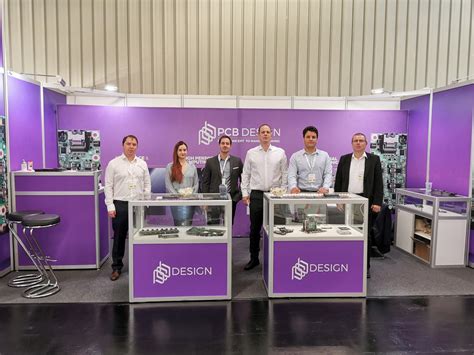
Future Prospects of Thermal Clad PCBs
Advancements in Materials
The future of Thermal Clad PCBs is closely tied to advancements in materials science. Researchers are exploring new dielectric materials with even higher thermal conductivity and better electrical insulation properties. Additionally, the development of advanced metal alloys and composites could further enhance the thermal performance of these PCBs.
Integration with Emerging Technologies
As emerging technologies such as 5G, Internet of Things (IoT), and artificial intelligence (AI) continue to evolve, the demand for efficient thermal management solutions will grow. Thermal Clad PCBs are well-positioned to play a key role in these technologies, enabling the development of more powerful and compact devices.
Sustainability and Eco-Friendly Solutions
The electronics industry is increasingly focusing on sustainability and eco-friendly solutions. Future developments in Thermal Clad PCBs may include the use of recyclable materials and more energy-efficient manufacturing processes. This aligns with the broader industry trend towards reducing the environmental impact of electronic products.
Customization and Flexibility
As the demand for customized electronic solutions grows, Thermal Clad PCBs are likely to become more flexible and adaptable. Advances in manufacturing techniques, such as additive manufacturing (3D printing), could enable the production of highly customized Thermal Clad PCBs tailored to specific applications and requirements.
Enhanced Thermal Simulation and Design Tools
The development of advanced thermal simulation and design tools will further enhance the capabilities of Thermal Clad PCBs. These tools will allow designers to optimize the thermal performance of PCBs during the design phase, reducing the need for costly prototyping and testing. This will lead to faster development cycles and more efficient thermal management solutions.
Conclusion
Thermal Clad PCBs represent a significant advancement in the field of thermal management for electronic devices. By incorporating a metal core to enhance heat dissipation, these PCBs offer numerous benefits, including improved reliability, compact design, extended component lifespan, and cost-effectiveness. Their applications span a wide range of industries, from LED lighting and automotive electronics to power electronics and medical devices.
As technology continues to evolve, the importance of efficient thermal management will only grow. Thermal Clad PCBs are poised to play a crucial role in meeting this demand, driven by advancements in materials, integration with emerging technologies, and a focus on sustainability. With ongoing research and development, the future of Thermal Clad PCBs looks promising, offering new possibilities for innovation and performance in the electronics industry.
In conclusion, Thermal Clad PCBs are not just a solution to a technical challenge; they are a testament to the ingenuity and forward-thinking approach of the electronics industry. As we continue to push the boundaries of what is possible, Thermal Clad PCBs will remain at the forefront, ensuring that our electronic devices are not only powerful and compact but also reliable and long-lasting.

